Clear vs Cloudy vs Amber Trichomes: THCA Harvest Timing Explained
Understanding clear cloudy amber trichomes is the single most important skill for any cannabis cultivator looking to achieve specific effects from their harvest. These tiny, crystal-like structures that blanket your cannabis flowers are far more than just aesthetic features—they're sophisticated chemical factories that determine the potency, effects, and overall quality of your final product.
The journey from immature to overripe trichomes represents a fascinating biological process involving cannabis trichome development, cannabinoid synthesis, and eventual degradation. Many cultivators make the critical mistake of harvesting too early or too late, missing the narrow window when THCA trichome ripeness reaches its peak potential. Others harvest based on arbitrary timelines rather than actually observing the plant's signals through trichome color harvest indicators.
This comprehensive guide will demystify the three distinct THCA trichome stages—clear, cloudy, and amber—explaining exactly what's happening chemically at each phase, how it affects your experience, and how to time your harvest for your desired outcome. Whether you're seeking energetic daytime effects or sedative nighttime medicine, understanding trichome color meaning gives you unprecedented control over your cultivation results.
By the end of this guide, you'll be able to read your plants like an expert, understand the science behind trichome maturity THCA production, and make informed decisions about the perfect harvest window for your personal preferences.
Clear Trichomes: The Immature Stage
Appearance Under Magnification
Clear trichomes represent the earliest stage of cannabis trichome development and are easily identifiable with a 60-100x jeweler's loupe or digital microscope. These trichomes appear completely translucent, almost glass-like, resembling tiny mushrooms or lollipops with bulbous heads sitting atop thin stalks. The clarity allows you to see straight through the trichome head, and they often appear wet or shiny under proper lighting.
At this stage, the trichome glands are still actively developing their internal structure. The cell walls are thin and fragile, and the glandular cavity inside hasn't yet filled with the dense concentration of cannabinoids and terpenes that will characterize later stages. Under high magnification, you may notice that clear trichomes stand more upright and rigid compared to their mature counterparts, which tend to lean or bend slightly under the weight of accumulated resin.
The transition from clear to cloudy trichomes THCA production doesn't happen overnight. You'll typically see a gradual clouding that starts from the base of the trichome head and works its way outward, creating a milky opacity that signals cannabinoid accumulation is accelerating.
THCA Levels During Clear Stage
During the clear trichome phase, THCA content typically ranges from just 30-50% of what the plant will eventually achieve at peak maturity. This significant deficit exists because the biosynthetic pathways responsible for cannabinoid production are still ramping up their activity. The plant is actively constructing the enzymatic machinery needed for peak THCA trichome stages production, but hasn't yet reached full operational capacity.
Research shows that cannabinoid synthesis doesn't follow a linear progression. Instead, there's an exponential increase in THCA production as trichomes transition from clear to cloudy. This means that waiting just one additional week can sometimes double the potency of your harvest. The terpene profile is also immature at this stage, with many of the complex aromatic compounds not yet fully developed.
From a molecular perspective, the olivetolic acid and geranyl pyrophosphate precursors are combining to form cannabigerolic acid (CBGA)—the "mother cannabinoid"—but the enzyme THCA synthase hasn't yet converted sufficient quantities of CBGA into THCA trichome ripeness levels. This biochemical bottleneck resolves itself as the plant matures.
Effects of Harvesting During Clear Stage
Harvesting cannabis when trichomes remain predominantly clear is one of the most common mistakes novice cultivators make, often driven by impatience or misreading flowering timeline recommendations. The effects of clear-trichome cannabis are distinctly unpleasant for most users, characterized by an uncomfortable mental experience that lacks the smoothness and complexity of properly matured flower.
Users consistently report that clear-stage harvests produce racy, anxious effects that come on quickly but dissipate just as fast. The high feels "edgy" or "speedy," often accompanied by increased heart rate, restlessness, and sometimes mild paranoia. This isn't the clean, energetic cerebral stimulation that comes from cloudy trichomes THCA at peak production—it's an incomplete, unbalanced experience that reflects the immature chemical profile.
The short duration of effects from clear-stage harvests means users often find themselves redosing frequently, which can amplify the uncomfortable anxiety rather than producing satisfying effects. The lack of fully developed terpenes means the experience also lacks the aromatic complexity and entourage effect that modulates and rounds out the cannabinoid experience.
Additionally, early harvests significantly reduce your yield. Those final weeks of maturation don't just increase potency—they also add substantial weight as the trichomes swell with resin and the flowers reach their full density. Harvesting clear trichomes can reduce your final dried weight by 20-30% compared to waiting for proper maturity.
Time Remaining Until Maturity
When you observe predominantly clear trichomes under magnification, you typically have 1-3 weeks remaining until optimal harvest trichome ratio is achieved. However, this timeline varies considerably based on several factors including strain genetics, growing conditions, and where the plant is in its natural flowering cycle.
Indica-dominant strains generally transition from clear to cloudy more rapidly than sativa-dominant varieties, sometimes completing the change in as little as 7-10 days under optimal conditions. Pure sativas or sativa-dominant hybrids may take the full three weeks or even longer, particularly if they have longer flowering periods to begin with.
Environmental factors play a crucial role in this timeline. Adequate light intensity during the final weeks of flowering accelerates cannabinoid production, while insufficient lighting can stall development. Temperature also matters—slight stress from cooler nighttime temperatures (but not cold enough to cause damage) can actually enhance the final push toward maturity by signaling to the plant that its growing season is ending.
The best approach is to begin monitoring trichomes when you're approximately two weeks away from the breeder's recommended harvest date. Check every 2-3 days, keeping detailed notes or photos to track the progression. You'll notice the change accelerating as you approach peak maturity, with the transition from mostly clear to mostly milky white trichomes sometimes happening quite rapidly in the final days.
Cloudy Trichomes: Peak THCA Production
Why Cloudy Means Maximum THCA
The transformation from clear to cloudy trichomes THCA signals that your plant has reached the pinnacle of its cannabinoid production capabilities. This opacity isn't just a visual change—it represents a fundamental shift in the chemical composition inside each trichome head. The cloudiness you observe is actually the dense concentration of cannabinoid crystals, terpenes, flavonoids, and other compounds that have accumulated to the point where light can no longer pass through clearly.
Think of trichome development like filling a glass jar with cream. An empty jar (clear trichomes) allows you to see straight through. As you fill it with thick, opaque cream (milky white trichomes), the contents become increasingly cloudy until you can't see through at all. This is exactly what's happening inside each trichome gland as it reaches peak resin production.
At the cloudy stage, THCA levels reach their maximum concentration, typically comprising 15-30% of the dried flower weight depending on genetics and growing conditions. This represents the plant's ultimate achievement in cannabinoid synthesis—it has successfully converted its energy reserves and nutrient uptake into the highest possible density of psychoactive compounds.
The timing is biologically purposeful. In nature, these resin glands evolved to protect developing seeds from UV radiation, desiccation, and herbivore consumption. Peak stickiness and potency during the cloudy phase coincides with when the plant would be in its prime seed-production window, making this the optimal time for cultivators to harvest flowers intended for human consumption.
The Science of Cannabinoid Synthesis
Understanding the biochemical processes behind THCA trichome stages helps explain why the cloudy phase represents the ideal harvest window. The synthesis of THCA is a complex enzymatic process that occurs within the specialized secretory cells of capitate-stalked trichomes.
The process begins with the plant producing olivetolic acid through the polyketide pathway and geranyl pyrophosphate from the MEP/DOXP pathway. These two precursor molecules combine via the action of an enzyme called olivetolic acid cyclase to form cannabigerolic acid (CBGA)—the foundational molecule from which all other cannabinoids derive.
From CBGA, strain-specific enzymes determine which cannabinoid profile develops. In high-THCA cannabis, the enzyme THCA synthase converts CBGA into tetrahydrocannabinolic acid. This enzyme reaches peak activity during the flowering phase, working constantly to convert available CBGA into THCA as quickly as the plant can produce the precursor molecules.
The cloudy appearance indicates that this synthesis process has reached equilibrium—the plant is producing THCA at maximum speed while simultaneously, THCA is very slowly beginning to degrade through oxidation. At the cloudy stage, production still significantly outpaces degradation, maintaining peak trichome maturity THCA levels.
Terpene synthesis follows a parallel pathway, with many of the same precursor molecules being directed toward aromatic compound production. This is why properly matured cannabis at the cloudy stage also features the most complex and pronounced aromatic profile—the terpene glands have also reached their fullness.
Ideal Percentage Ranges
The optimal harvest window for most cultivators targeting peak THCA occurs when approximately 70-90% of trichomes display that characteristic milky, cloudy opacity. This range provides the perfect balance of maximum potency while still maintaining the bright, clear-headed effects that many users prefer from THCA trichome ripeness.
It's important to note that you'll rarely see 100% uniform cloudy trichomes across an entire plant. Cannabis trichome development occurs in waves, with different areas of the plant maturing at slightly different rates. The top colas receive the most light and typically mature first, while lower branches may lag by several days or even a week.
When inspecting for the ideal harvest trichome ratio, take samples from multiple locations—upper colas, mid-level branches, and lower buds. Your goal is to find the point where the majority of trichomes across the entire plant fall into that cloudy range. At this stage, you might still see 10-20% clear trichomes (typically on lower growth) and perhaps 5-10% beginning to turn amber (usually on the highest colas).
For commercial cultivators or those seeking absolutely peak potency for concentrate production, harvesting when 85-90% of trichomes are cloudy and only 5-10% have begun turning amber represents the sweet spot. This narrow window captures the plant at its most potent moment before any significant THCA degradation amber conversion begins.
Some cultivators prefer to harvest slightly earlier, when 70-80% are cloudy with 20-30% still clear. This approach sacrifices a small amount of peak potency but ensures a more energetic, cerebral effect profile with zero sedative qualities.
Effects Profile: Energetic, Cerebral, Uplifting
Cannabis harvested at the predominantly cloudy stage produces the most energetic and mentally stimulating effects in the spectrum of possible harvest timing outcomes. This is the window that many users seeking daytime medication or creative enhancement should target, as the trichome color harvest timing directly influences the subjective experience.
The effects typically manifest as strong cerebral stimulation with enhanced focus, creativity, and mental energy. Users report heightened sensory perception, increased sociability, and an uplifted mood that lacks the heavy, sedative body effects associated with later harvests. This makes cloudy-stage harvests ideal for activities requiring mental engagement—creative projects, social gatherings, outdoor activities, or daytime medication needs.
The duration of effects from properly matured cloudy-trichome cannabis tends to be longer than immature clear-stage harvests but more manageable than amber-dominant harvests. Most users experience 2-4 hours of peak effects followed by a gradual, comfortable comedown without significant drowsiness or mental fog.
The terpene profile at the cloudy stage is at its most vibrant and complex, contributing to the bright, clean character of the experience. Uplifting terpenes like limonene, pinene, and terpinolene are at their peak concentration, working synergistically with THCA to produce the characteristic energetic effects through the entourage effect.
For medical users seeking relief from depression, fatigue, lack of appetite, or creative blocks without sedation, the cloudy stage represents the ideal harvest window. The high THCA content provides strong therapeutic effects while the minimal CBN presence ensures mental clarity is preserved.
Amber Trichomes: THCA Degradation
CBN Formation from THCA/THC Oxidation
The appearance of amber or brown trichomes represents the beginning of cannabinoid degradation through oxidation—a natural aging process that fundamentally changes the chemical composition and effects of your cannabis. Understanding when trichomes turn amber is crucial for cultivators seeking specific therapeutic effects or those trying to avoid over-ripening their plants.
Amber coloration occurs as THCA and THC molecules are exposed to oxygen, light, and heat over time. This oxidative process converts these molecules into cannabinol (CBN), a degradation product with distinctly different pharmacological properties. While THCA/THC are known for their psychoactive and stimulating effects, CBN is primarily recognized for its sedative properties and is often called the "sleepy cannabinoid."
The chemical transformation follows this pathway: THCA naturally decarboxylates into THC over time through heat and light exposure. THC then oxidizes into CBN through a process that breaks down the molecular structure. This is why amber trichomes indicate not just ripeness but the beginning of over-ripeness—the plant has passed its peak THCA production phase and is now in decline.
The amber color itself comes from the accumulation of these oxidized compounds combined with other chemical changes in the trichome structure. The once-clear resin head becomes darkened and clouded with degradation products, similar to how an apple turns brown when exposed to air.
It's worth noting that CBN conversion harvest timing is a strategic choice. Some cultivators intentionally push their plants to higher amber percentages to increase sedative effects, while others view any amber as a sign they've waited too long. Your personal goals determine the optimal approach.
Why Amber Increases Sedation
The sedative effects associated with amber trichomes come primarily from the elevated CBN content, though several other factors contribute to the heavy, body-focused experience of later harvests. CBN interacts with the endocannabinoid system differently than THCA or THC, showing particular affinity for CB2 receptors which are more concentrated in the peripheral nervous system and immune cells rather than the brain.
Research indicates that CBN is approximately 10% as psychoactive as THC, meaning it produces less mental high but more physical effects. Users consistently report that high-CBN cannabis from amber trichomes harvest timing produces profound relaxation, heavy limbs, and strong sedative effects that make it ideal for nighttime use or sleep support.
The sedation isn't solely due to CBN, however. Later harvests also feature degraded or volatilized terpenes, with the more stimulating compounds often evaporating or converting first. What remains is a terpene profile dominated by myrcene and other sedating compounds, which work synergistically with CBN to enhance the sleepy effects.
Additionally, the overall decline in THCA/THC content relative to CBN shifts the ratio of effects. Instead of strong cerebral stimulation modulated by minor amounts of sedating compounds, you get mild cerebral effects dominated by strong sedative properties—a complete reversal of the effect profile found in cloudy-stage harvests.
For medical users dealing with insomnia, chronic pain with sleep disturbance, or severe anxiety, strategically timing amber trichomes harvest timing to achieve 20-30% amber trichomes can produce highly effective nighttime medicine. However, those seeking daytime functionality should avoid high amber percentages.
Strategic Amber Percentages
Determining the ideal amber percentage for your harvest trichome ratio depends entirely on your desired effects and intended use case. There's no universally "correct" answer—it's about matching the harvest timing to your specific needs.
For most daytime or balanced use, keeping amber trichomes to 5-15% while maintaining 80-90% cloudy produces a well-rounded effect that combines good potency with a touch of physical relaxation. This ratio is popular among cultivators seeking "all-purpose" cannabis that provides strong effects without overwhelming sedation.
Increasing to 15-20% amber while maintaining 70-80% cloudy creates a notably more relaxing experience suitable for evening use. The mental effects remain present but are tempered by increasing body relaxation and calm. This range works well for users seeking stress relief and physical relaxation while maintaining some mental clarity.
Pushing to 20-30% amber with 60-70% cloudy (and minimal clear trichomes) produces decidedly sedative effects ideal for nighttime use, sleep support, or managing chronic pain. At this stage, the THCA degradation amber conversion has significantly increased CBN levels, creating heavy-bodied, couch-lock effects that most users find unsuitable for daytime activities.
Going beyond 30% amber generally indicates you've waited too long and are sacrificing too much THCA content for the CBN conversion. Unless you're specifically trying to create high-CBN material for sleep medication, most cultivators aim to harvest before reaching this point.
It's also worth noting that amber trichomes tend to appear first on the plant's highest, most light-exposed colas. You might observe 20% amber on top buds while lower branches show only 5% amber. This gradient must be factored into your harvest timing decisions.
Effects Profile: Relaxing, Sedative, Body-Focused
Cannabis harvested with significant amber trichome percentages produces effects that are dramatically different from earlier harvest windows. The experience shifts from cerebral and energetic to physical and sedating, with the mental high taking a back seat to powerful body effects.
Users consistently report that high-amber cannabis produces heavy, relaxed body sensations often described as "couch-lock"—a profound physical relaxation that makes movement feel effortful and rest feel irresistible. The muscles relax deeply, tension melts away, and many users feel their body growing pleasantly heavy and warm.
The mental effects are notably more subdued compared to cloudy-stage harvests. Rather than energetic cerebral stimulation, users experience a gentle mental calm or mild euphoria without strong psychoactive intensity. Some describe it as a "body high" with minimal "head high," though this varies by individual and starting cannabinoid content.
The sedative effects intensify as evening progresses, with many users finding themselves naturally drowsy within 1-2 hours of consumption. This makes amber-dominant harvests particularly valuable as sleep aids—many medical cannabis users specifically seek out later-harvest material for nighttime use.
Duration of effects tends to be longer but less distinct than earlier harvests. Rather than a clear peak and comedown, high-amber cannabis produces a gradual onset of relaxation that persists for several hours before slowly fading. Some users wake feeling slightly groggy if consumed too close to bedtime, though most find the sleep quality improvement worth this minor tradeoff.
For chronic pain sufferers, the combination of physical relaxation and sedative effects can provide significant relief, particularly for conditions that worsen at night or interfere with sleep. The reduced psychoactive intensity also makes high-amber cannabis more tolerable for users who find strong cerebral effects uncomfortable.
Mixed Trichome Ratios for Specific Effects
90% Cloudy + 10% Amber: Balanced High
The 90% cloudy, 10% amber ratio represents what many cultivators consider the "sweet spot" for harvest trichome ratio targeting balanced, all-purpose effects. This combination captures the plant at near-peak THCA production while incorporating just enough CBN to add subtle physical relaxation without compromising mental clarity.
This ratio produces effects that are predominantly cerebral and uplifting, similar to pure cloudy harvests, but with a gentle body component that rounds out the experience. Users report feeling mentally energized and focused while also experiencing pleasant physical relaxation that takes the edge off without causing sedation. It's often described as feeling "high but functional"—capable of activities requiring focus while still clearly medicated.
The 10% amber presence adds just enough body relaxation to prevent the occasionally anxious or racy feeling some users experience from 100% cloudy harvests, particularly with high-THCA strains. This small amount of CBN acts as a buffer, smoothing out the experience and extending the duration slightly without dramatically changing the character of the effects.
This ratio works exceptionally well for afternoon or early evening use when you want strong effects but need to remain functional for dinner, social activities, or light responsibilities. It's also popular among medical users who need consistent relief throughout the day without overwhelming sedation.
Achieving this ratio requires careful monitoring during the final days of trichome maturity THCA development. Once you observe trichomes transitioning past the mostly-cloudy stage, check daily as the amber percentage can increase rapidly in the final 3-5 days before harvest.
70% Cloudy + 30% Amber: Nighttime Medicine
Cultivators seeking powerful nighttime medication often target the 70% cloudy, 30% amber ratio, which provides the maximum sedative effects while maintaining reasonable THCA potency. This represents the extreme end of intentional harvest timing before the plant becomes genuinely over-ripe.
At this ratio, CBN content has increased substantially through THCA degradation amber conversion, producing pronounced sedative effects that rival or exceed traditional sleep medications for many users. The cerebral effects, while still present, are significantly muted compared to earlier harvests—the focus shifts almost entirely to physical relaxation and sedation.
Users report feeling deeply relaxed within 30-60 minutes of consumption, with heavy body sensations, reduced pain perception, and increasing drowsiness as time progresses. Mental effects include a gentle euphoria and mental quieting that helps racing thoughts subside—particularly valuable for users whose sleep difficulties stem from anxiety or an overactive mind.
This ratio is specifically intended for evening use, typically consumed 1-2 hours before desired sleep time. It's unsuitable for any activities requiring focus, coordination, or mental clarity, but excels at facilitating deep, restful sleep. Many medical users report waking more refreshed after using high-amber cannabis compared to pharmaceutical sleep aids, with less morning grogginess.
The tradeoff for these powerful sedative effects is reduced overall THCA potency compared to earlier harvest windows. By allowing 30% of trichomes to turn amber, you're sacrificing some peak cannabinoid content for the conversion to CBN. However, for users prioritizing sleep and relaxation over cerebral effects, this exchange is worthwhile.
Achieving 30% amber requires patience and careful monitoring, as you're pushing the plant well past its peak and into early decline. Some cultivators find the risk-reward calculation unfavorable, preferring to harvest at peak potency and simply consume more material for nighttime use rather than intentionally degrading the crop.
100% Cloudy: Peak Cerebral Effects
Harvesting at the precise moment when trichomes reach maximum cloudiness—100% milky white trichomes with virtually no clear or amber—represents the absolute pinnacle of cerebral effects and THCA potency. This is the harvest window that delivers the most intense mental stimulation and the highest concentration of psychoactive cannabinoids.
In practice, achieving truly 100% cloudy across an entire plant is nearly impossible due to the natural variation in cannabis trichome development rates across different areas. What cultivators actually target is harvesting when top colas show 5-10% amber while lower growth remains 10-15% clear—this averages out to mostly cloudy across the entire plant.
The effects profile of this harvest timing is characterized by intense mental energy, heightened sensory perception, strong creativity enhancement, and potentially powerful psychoactive effects. Users often describe feeling very "high" in the traditional sense—the experience is cerebral-dominant with minimal body effects. For some users, particularly those sensitive to THC, this can feel too intense or even produce anxiety if the dose isn't carefully controlled.
This timing is ideal for experienced users who appreciate strong psychoactive effects, creative professionals seeking inspiration, social situations where mental energy is desired, or medical users treating conditions like depression or fatigue without needing physical sedation. However, it's typically unsuitable for novice users or those prone to THC-induced anxiety.
The terpene profile at this exact moment is at its absolute peak complexity, with all aromatic compounds present in their full glory. The resulting flavor and aroma experience is as good as it gets, making this the preferred harvest window for cannabis connoisseurs who prioritize sensory experience alongside effects.
From a commercial perspective, 100% cloudy represents maximum saleable potency and weight—the plant has reached full trichome swelling without any degradation. However, the narrow harvest window and intense effects may make slightly later harvests (with 10-15% amber) more practical for broader consumer appeal.
How to Check Different Plant Areas
Top Colas vs Lower Buds
Understanding that cannabis trichome development progresses at different rates across the plant is crucial for making informed harvest decisions. The most dramatic differences occur between top colas and lower buds, which can be separated by 5-10 days of maturation due to light exposure disparities.
Top colas receive the most intense, direct light throughout the flowering cycle, which accelerates trichome development and cannabinoid synthesis. These uppermost flowers typically show amber trichomes first, sometimes reaching 15-20% amber while mid-level branches remain mostly cloudy and lower growth shows a mix of clear and cloudy trichomes.
When inspecting top colas, select bud sites from the outer surface that receives full light rather than shaded inner portions. Use your magnification tool to examine 3-4 different locations on the same cola to account for microenvironmental variations. Note the approximate percentage of clear, cloudy, and amber trichomes at each inspection point.
Lower buds present a different picture. These flowers receive significantly less light intensity and often develop in the shade of upper growth. Their trichome development lags behind by several days to a week, meaning they might still show 30-40% clear trichomes when top colas are predominantly cloudy with some amber.
Some cultivators choose to harvest in stages, taking top colas first when they reach the desired trichome color harvest ratio, then allowing lower branches an additional week to mature before a second harvest. This approach maximizes quality across the entire plant but requires more labor and creates harvests with different effect profiles.
Others prefer single-harvest approaches, timing their cut based on when the middle of the plant reaches ideal maturity. This accepts that top colas will be slightly more amber (more sedative) and lower buds slightly less mature (more energetic) in exchange for harvest efficiency.
Sugar Leaves vs Calyxes
Another critical distinction in trichome maturity THCA assessment involves where you're actually looking. Sugar leaves—the small, trichome-covered leaves growing from within the buds—and calyxes (the actual flower structures) often show different maturation rates, and checking the wrong location can lead to premature or delayed harvests.
Sugar leaf trichomes typically mature faster than calyx trichomes, often showing amber coloration 3-5 days before the actual flower reaches the same stage. This is because leaves are thinner, receive more direct light exposure, and have a different metabolic rate than the denser flower material.
Many inexperienced cultivators make the mistake of checking only sugar leaves, seeing amber trichomes, and harvesting prematurely. When they trim their harvest, they discover the actual calyxes were still predominantly clear or early cloudy—they've harvested too soon based on incorrect sampling.
The proper technique involves gently moving aside sugar leaves to examine trichomes directly on the calyx surfaces. These are the structures you're actually going to consume (after trimming away most sugar leaves), so they should drive your harvest decision. Look for the swollen, tear-drop shaped calyxes and focus your magnification on their surfaces.
In practice, most experienced cultivators develop a quick visual assessment method: when sugar leaves show 30-40% amber, that's often the signal to start daily monitoring of calyx trichomes, knowing they're probably 7-10 days from ideal harvest. When sugar leaves are 50%+ amber, calyx trichomes are likely approaching the perfect cloudy-dominant stage.
Some cultivators do monitor both locations systematically, recording separate observations for sugar leaves and calyxes in their harvest journal. This data helps dial in the timing for future cycles of the same strain, as the relationship between leaf and calyx maturation remains fairly consistent for a given genetic line.
Creating a Representative Sample
Given the variability in THCA trichome stages across different plant areas, creating a representative sample is essential for making accurate harvest timing decisions. A single observation point can be misleading—comprehensive sampling provides a true picture of overall plant maturity.
The most effective sampling method involves selecting 8-12 inspection points across the entire plant:
- 2-3 sites on top colas (different flowers, not the same bud)
- 3-4 sites on mid-level branches from different sides of the plant
- 2-3 sites on lower branches that received less light
- Calyx trichomes specifically, avoiding sugar leaves
At each site, estimate the percentage of clear, cloudy, and amber trichomes. Don't worry about extreme precision—rough estimates like "mostly cloudy with some clear" or "about 20% amber" are sufficient. Record these observations in a journal or phone notes, including the date and time.
After collecting all data points, calculate rough averages: "Top growth average: 15% amber, 80% cloudy, 5% clear. Mid-level average: 5% amber, 85% cloudy, 10% clear. Lower growth average: 0% amber, 60% cloudy, 40% clear. Overall plant average: 7% amber, 75% cloudy, 18% clear."
This comprehensive picture reveals that while top colas are pushing into higher amber territory, the plant overall is still mostly cloudy with significant clear trichomes on lower growth. Depending on your goals, you might decide to harvest immediately (accepting that lower buds are less mature), wait another 3-4 days (for better lower bud development), or harvest in stages.
Creating detailed representative samples becomes easier with practice. Experienced cultivators often develop an intuitive sense for overall plant maturity after just a few inspection points, but beginners benefit greatly from systematic, documented sampling.
Daily Monitoring Schedule
When to Start Checking
Knowing when to begin monitoring trichomes is almost as important as knowing when to harvest. Starting too early wastes time checking predominantly clear trichomes, while starting too late might cause you to miss the optimal window entirely. Understanding the timing for your specific genetics helps establish an effective trichome harvest guide routine.
For most cannabis varieties, begin trichome monitoring approximately 2-3 weeks before the breeder's stated harvest date. If you're growing a strain labeled as "8-9 weeks flowering," start checking at the beginning of week 6. This gives you a baseline understanding of where the plant is in its development cycle and helps you catch the progression from clear to cloudy.
Environmental factors affect this timing. Plants grown under optimal conditions with strong lighting often mature slightly faster than the stated timeline, while those grown under less-than-ideal conditions might need extra time. Your first cycle with any new strain should include early monitoring to establish its specific timeline for future reference.
During the first couple of weeks of monitoring (roughly weeks 6-7 for an 8-9 week strain), checking every 3-4 days is sufficient. Trichomes are still predominantly clear and changing slowly, so daily checks would be redundant. Use this period to familiarize yourself with the inspection process and watch the gradual clouding begin.
As you approach the projected harvest window (typically the final 7-10 days), increase monitoring frequency to every 1-2 days. This is when trichome development accelerates, and the transition from mostly cloudy to introducing amber can happen surprisingly fast. Some strains show barely any amber one day, then 15-20% amber three days later.
In the final 3-5 days when you observe trichomes entering your target range, switch to daily monitoring. This allows you to catch the perfect moment before the plant progresses past your desired harvest trichome ratio. Many cultivators set a specific time each day (early morning often works best) for consistent monitoring.
How Often to Inspect
Establishing an effective inspection frequency balances the need for accurate timing against the practical realities of your schedule and the plant's development speed. Over-monitoring is inefficient, while under-monitoring risks missing optimal harvest timing.
During the early monitoring phase (2-3 weeks before expected harvest), inspecting every 3-4 days provides adequate information without becoming tedious. At this stage, trichomes transition slowly from clear to cloudy, and daily changes are minimal. Use this period to document the progression in photos or notes, building a reference library for future cycles.
As you enter the critical window—roughly 7-10 days before expected harvest when trichomes are predominantly cloudy—shift to every 1-2 days. The pace of change accelerates during this period, and amber trichomes can begin appearing faster than you might expect. Missing this transition by checking too infrequently could result in harvesting later than intended.
In the final 3-5 days when you've identified that trichomes are approaching your target ratio, daily monitoring becomes essential. Some fast-finishing strains or plants under stress can progress from 5% amber to 25% amber in just 72 hours. Daily checks ensure you catch the optimal moment.
Many cultivators establish a routine time for daily checks—early morning often works best because it becomes part of the daily plant care routine (checking for issues, adjusting environmental controls, etc.). Consistent timing also means you're observing trichomes under similar lighting conditions, reducing variability in your assessments.
Weather and environmental factors can accelerate or slow final-stage development. Heat waves, unusual cold, or significant humidity changes might speed up or slow the finishing process. During unusual weather, consider checking twice daily in the final days if you're concerned about missing the window.
Remember that a day or two won't make or break your harvest in most cases. If your schedule prevents daily monitoring during the final week, checking every other day is usually acceptable. The key is being in the general range of your target rather than hitting an exact single-day window—especially with the 70-90% cloudy recommendation, which provides a multi-day harvest window rather than a single perfect moment.
Conclusion: Personal Preference in Harvest Timing
Understanding clear cloudy amber trichomes and their relationship to effects, potency, and THCA trichome ripeness ultimately empowers you to harvest cannabis perfectly suited to your personal preferences and needs. There is no single "correct" harvest time—only the correct time for your specific goals.
Some cultivators consistently harvest at 90% cloudy with minimal amber, preferring the energetic, cerebral effects and peak THCA potency this timing provides. Others intentionally push to 70% cloudy and 30% amber, prioritizing the sedative, physically relaxing effects that high CBN content delivers. Both approaches are valid—they simply target different points on the effects spectrum.
Your ideal amber trichomes harvest timing depends on factors including your tolerance, sensitivity to different cannabinoids, intended use time (daytime vs nighttime), whether you're seeking medical or recreational effects, and personal preference for mental vs physical effects. Experimentation across several harvests, trying different trichome ratios, helps you discover your personal sweet spot.
The beauty of understanding trichome color meaning is that it gives you repeatable, reliable control over your results. Once you determine that you prefer 85% cloudy / 15% amber for evening use, you can consistently reproduce those effects by harvesting at that ratio. This consistency is impossible when relying on arbitrary timelines or guesswork.
For those looking to explore different THCA trichome stages and their effects, check out the premium THCA flower selection available, featuring properly timed harvests for various effect profiles.
Keep detailed records of your harvest timing decisions and the resulting effects. Note the approximate trichome ratios at harvest, how the dried flower affects you, and whether you'd adjust timing earlier or later next cycle. This documented experience becomes your personal harvest guide, more valuable than any general recommendation.
Remember that environmental factors, strain genetics, and growing methods all influence how quickly trichomes progress through these stages. What takes 8 weeks in one garden might take 9 weeks in another. Trust your observations of actual trichome maturity THCA over predetermined schedules, and you'll consistently achieve outstanding results tailored to your preferences.
Frequently Asked Questions
Q: How long does it take for trichomes to go from clear to amber? A: The progression from clear to amber typically takes 2-4 weeks depending on genetics and growing conditions. Most strains spend 1-2 weeks in the predominantly clear stage, several days rapidly transitioning to cloudy at peak THCA trichome ripeness, then gradually develop amber over 7-14 days. Fast-finishing indica strains may complete this cycle in under 2 weeks, while long-flowering sativas might take 4+ weeks.
Q: Can I harvest different parts of the plant at different times? A: Yes, staged harvesting is a viable technique. Take top colas when they reach your target trichome color harvest ratio, then allow lower branches additional time to mature. This maximizes quality across the entire plant but requires extra labor and creates batches with slightly different effect profiles.
Q: Will amber trichomes continue developing after harvest? A: Yes, THCA degradation amber conversion continues slowly during drying and curing, though at a much slower rate than on the living plant. This is why harvesting at your target ratio rather than earlier is important—you'll see slight increases in amber percentage during the drying process. Proper storage in cool, dark conditions minimizes continued degradation.
Q: What magnification do I need to see trichome colors? A: A jeweler's loupe or digital microscope with 60-100x magnification is ideal for clear trichome color meaning assessment. Lower magnification (30-40x) makes it difficult to distinguish cloudy from clear, while higher magnification (200x+) can be unwieldy to use on living plants. Digital microscopes with photo capabilities help document progression over time.
Q: Do all strains follow the same trichome development timeline? A: No, different genetics show significant variation in cannabis trichome development speed. Indica-dominant strains typically transition from clear to amber more rapidly than sativa-dominant varieties. Your first cycle with any new strain should include early monitoring to establish its specific timeline for future reference.
Q: Is it better to harvest too early or too late? A: Given the choice, harvesting slightly late (more amber) is generally preferable to harvesting too early (too much clear). Early harvests produce uncomfortable, racy effects and significantly reduced potency, while late harvests simply shift effects toward sedation. However, both extremes should be avoided by proper monitoring and timing at your target harvest trichome ratio.
Q: Can I use a smartphone camera to check trichomes? A: Modern smartphones with macro capabilities or clip-on macro lenses can work for trichome inspection, though dedicated magnification tools are generally more reliable. If using a phone, ensure good lighting and steady hands, and take multiple photos to review later rather than trying to assess in real-time. Many cultivators find this method less convenient than loupes but useful for documentation.
Q: Where can I find high-quality THCA flower harvested at optimal trichome stages? A: For premium THCA flower harvested at ideal trichome maturity THCA levels, explore the curated selection available through trusted sources that understand proper harvest timing and cannabinoid preservation.

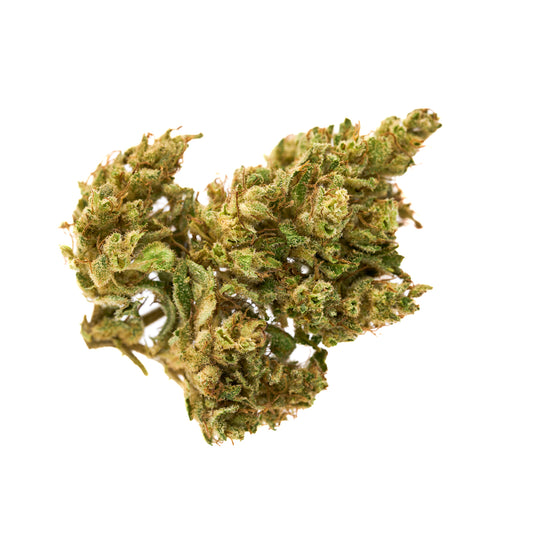
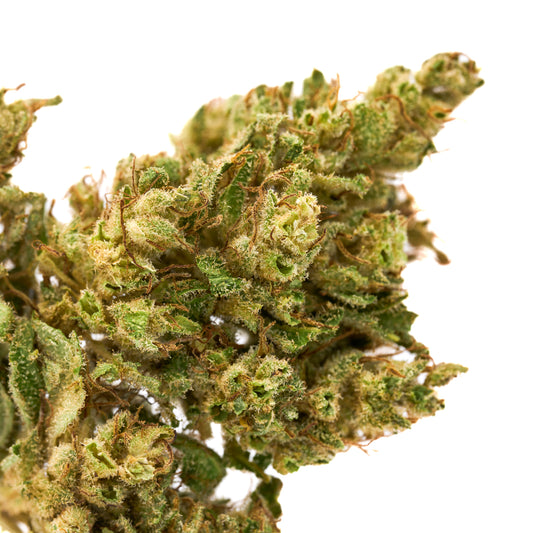
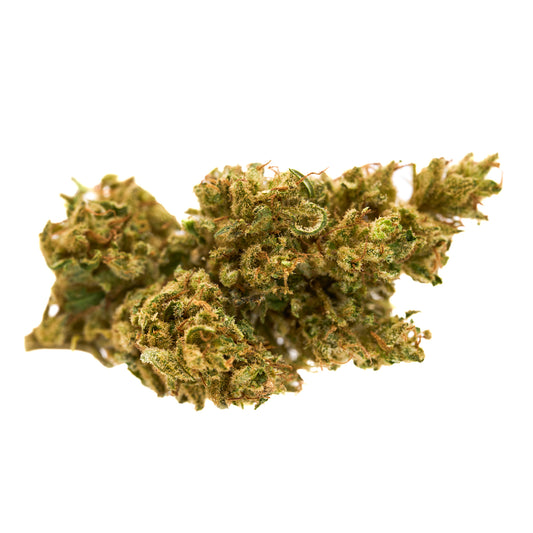
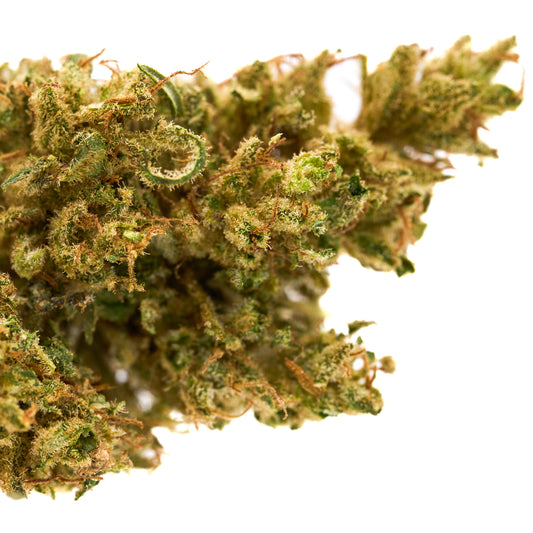
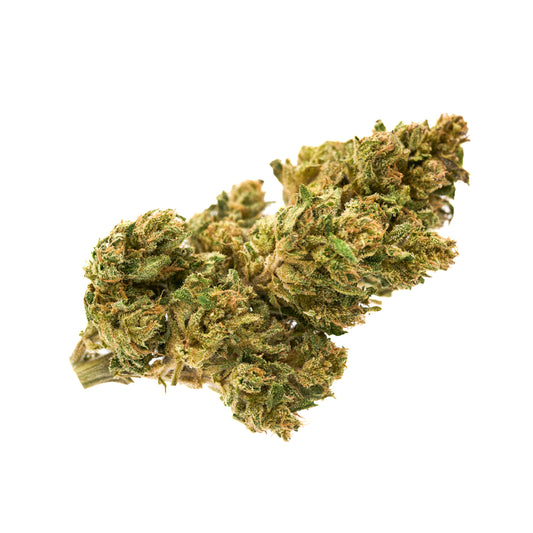
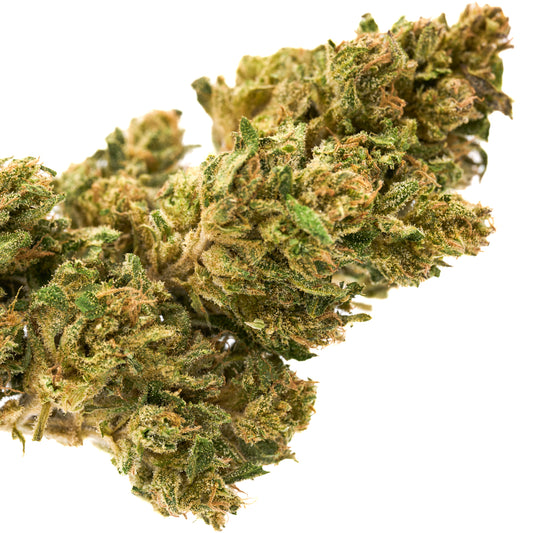



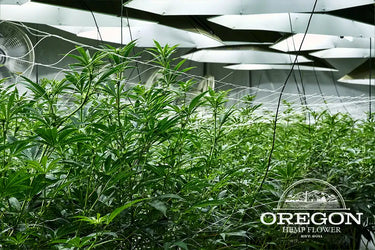

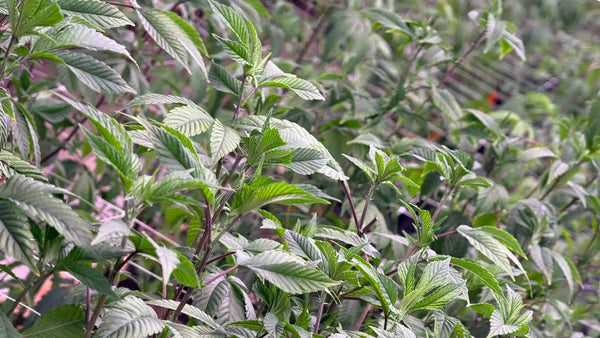
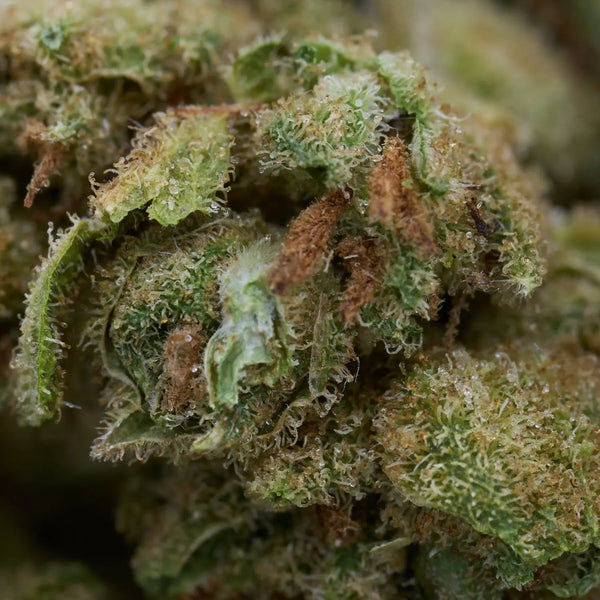
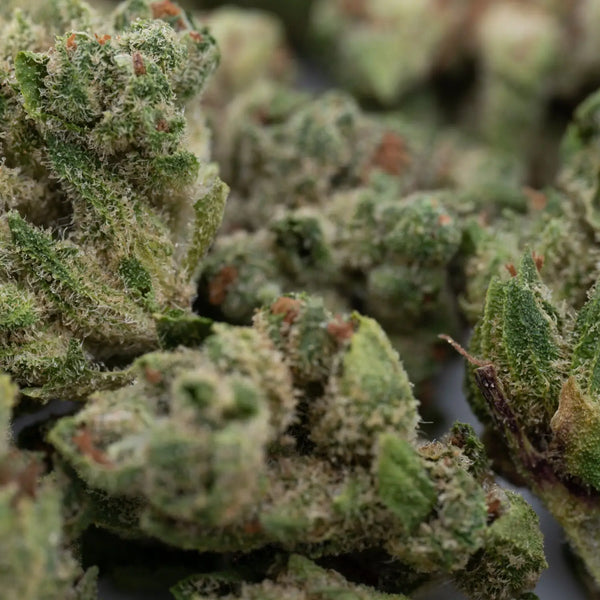
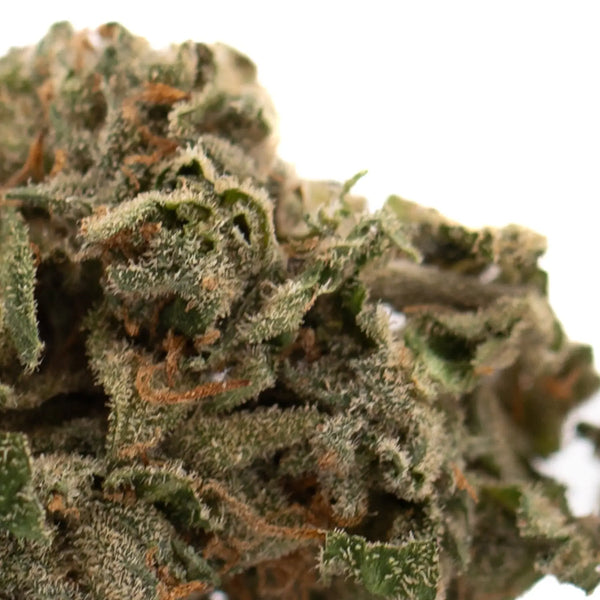
Leave a comment
Please note, comments need to be approved before they are published.